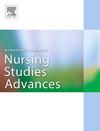Potential diagnostic tools for intensive care unit acquired weakness: A systematic review
IF 3.1
Q1 NURSING
International Journal of Nursing Studies Advances
Pub Date : 2025-01-27
DOI:10.1016/j.ijnsa.2025.100301
引用次数: 0
Abstract
Background
Intensive care unit-acquired weakness is a prevalent complication among critically ill patients, associated with heightened mortality rates, extended durations of mechanical ventilation and hospital stays, as well as diminished mobility and unfavorable prognoses. Early diagnosis of intensive care unit-acquired weakness and identification of its subcategories are essential for early implementation of targeted interventions and care strategies. Nevertheless, there remains a significant gap in the availability of widely accepted, accurate, and user-friendly diagnostic tools for intensive care unit-acquired weakness.
Objective
The aim of this research was to conduct a comprehensive review of pertinent studies on diagnostic tools for intensive care unit-acquired weakness in critically ill patients, summarizing their diagnostic efficacy and constraints to aid healthcare professionals in choosing suitable diagnostic tools for intensive care unit-acquired weakness.
Methods
The Preferred Reporting Items for Systematic reviews and Meta-Analyses (PRISMA) statement were utilized to direct the literature search, bias risk assessment and data extraction. The search databases included PubMed, Web of Science, EMBASE, Cochrane Library, and CINAHL. The search period was from the inception of the database to 1 July 2024. Different types of risk bias assessment tools were used for different types of studies. Due to the heterogeneity of the data, solely a narrative synthesis of the intensive care unit-acquired weakness diagnostic tool was performed in this study.
Results
A total of 38 observational studies were included in the study. In the included studies, the gold standard for intensive care unit-acquired weakness diagnosis include the Medical Research Council score, muscle biopsy and electrophysiologic testing, potential diagnostic tools include the manual muscle test, electrophysiologic testing, imaging, serum inflammatory markers, neuromuscular ultrasound, and other parameters. In various studies, the diagnostic accuracy of intensive care unit-acquired weakness diagnostic tools has been inconsistent, with each tool possessing its own set of advantages and disadvantages. At present, no single tool is available for the definitive diagnosis of intensive care unit-acquired weakness, necessitating the combined use of multiple methods, each with inherent limitations. Manual muscle test is inexpensive and straightforward to perform, but it requires the patient to be conscious and cooperative. Muscle biopsy is invasive and rarely utilized. Electrophysiological testing can help differentiate whether intensive care unit-acquired weakness is caused by neural or muscular alterations, thereby aiding in the classification of its subtypes. However, it is moderately invasive, costly, and operator-dependent. Other diagnostic modalities, such as imaging and respiratory parameters, are under ongoing investigation.
Conclusions
The diagnostic tools available in intensive care unit-acquired weakness are varied, each with its own strengths and limitations. This study summarizes the current evidence on potential diagnostic tools for intensive care unit-acquired weakness and identifies possible future directions for these diagnostic tools.
Registration
PROSPERO Registration Number CRD42024573139.
求助全文
约1分钟内获得全文
求助全文
来源期刊

International Journal of Nursing Studies Advances
Nursing-General Nursing
CiteScore
5.80
自引率
0.00%
发文量
45
审稿时长
81 days
 求助内容:
求助内容: 应助结果提醒方式:
应助结果提醒方式:


